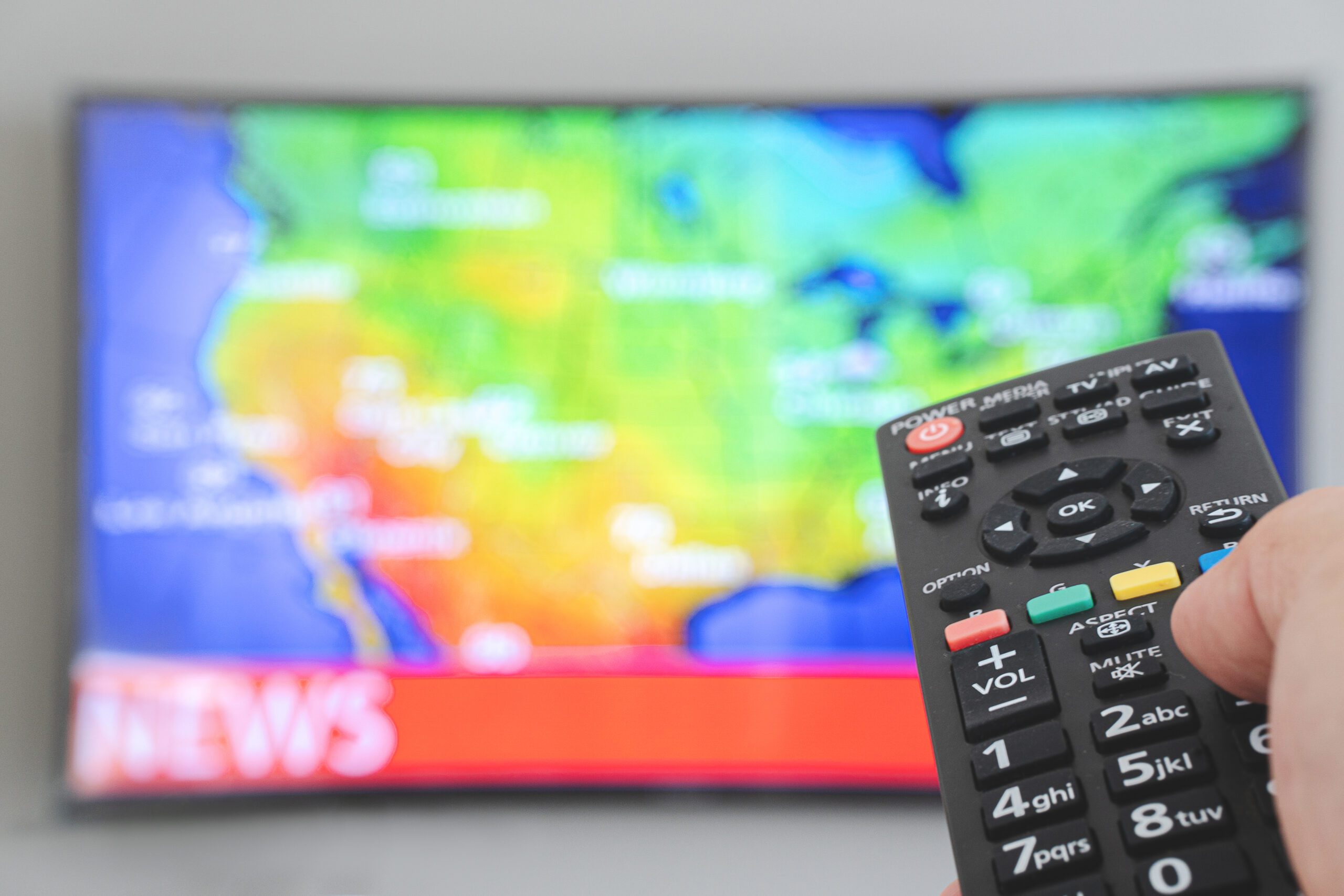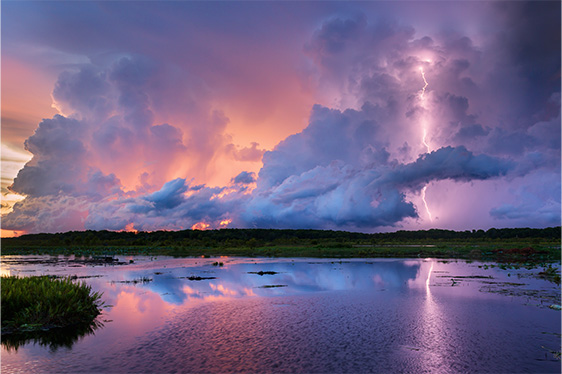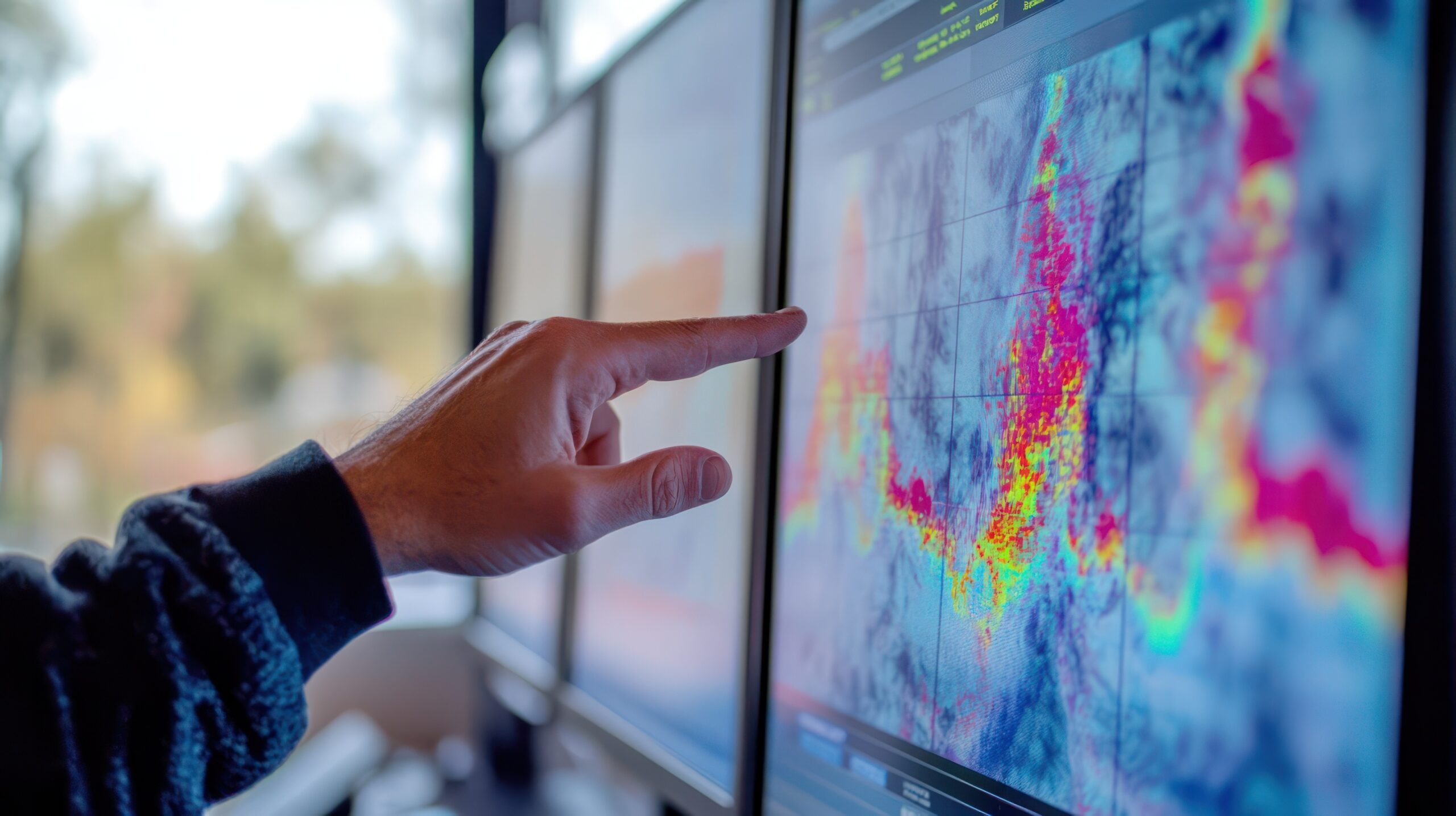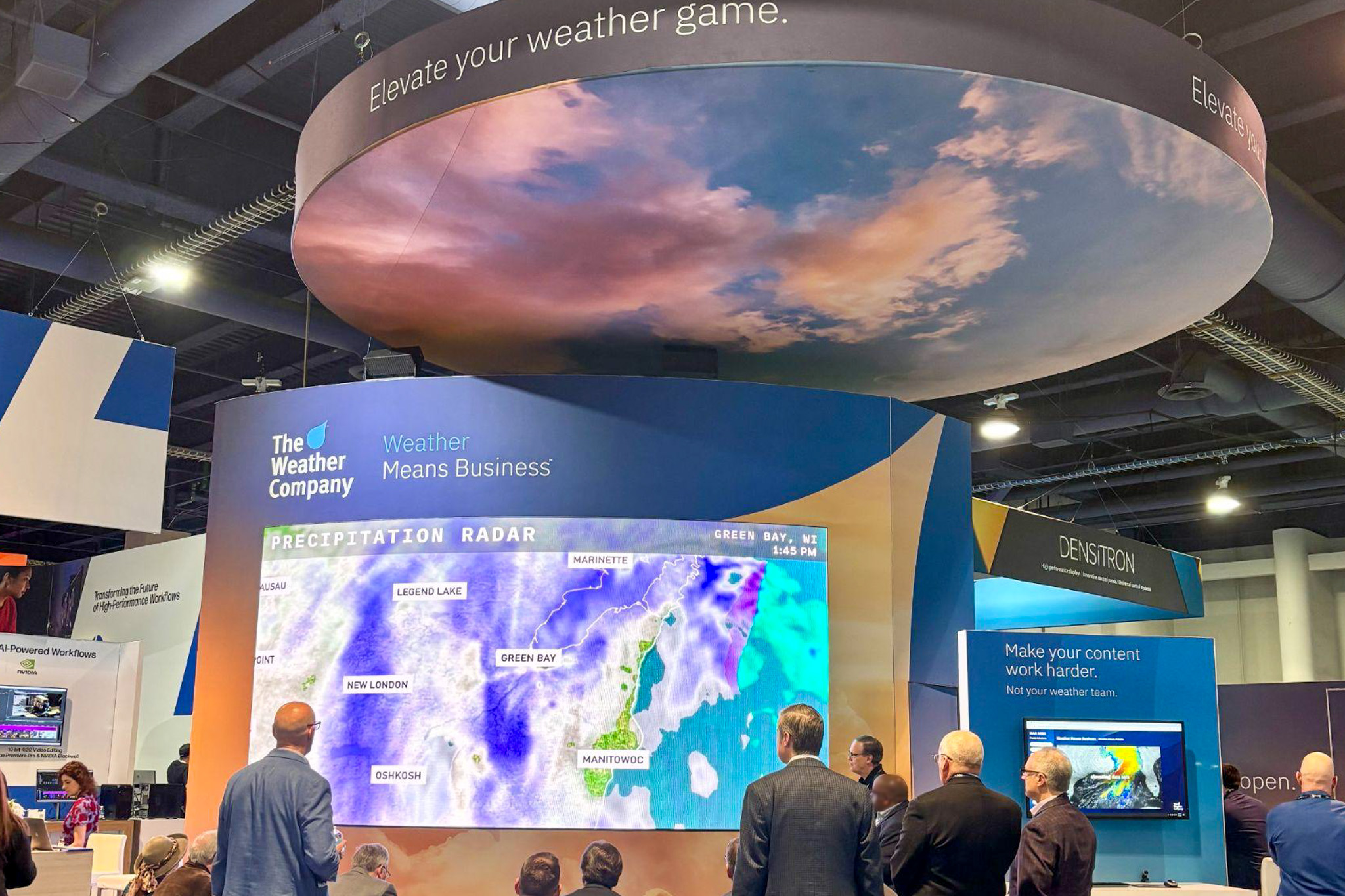Weather intelligence for the future: Crafting a strategic enterprise approach to changing environmental conditions
Continue readingKey takeaways
- The future of TV is no longer tied to the living room – it’s wherever your audience is watching.
- From AI to cloud tools, broadcasting technology trends are making storytelling faster, smarter, and more flexible.
- Viewers still turn to local meteorologists when it matters most, even in a digital-first world.
- Hispanic audiences are shaping the next era of content with their strong presence on streaming and mobile platforms.
As more viewers turn to digital platforms for news and content, TV broadcasting is changing fast to stay relevant in a mobile, on-demand world. The next chapter of the future of TV belongs to those who can blend emerging broadcasting technology trends with what has always made television essential: accurate information, local trust, and timely delivery.
1) From linear decline to digital-first dominance
Audiences are continuing to shift toward digital platforms – and the data is clear. According to Nielsen, streaming accounted for 44.8% of U.S. TV viewing in May 2025,1 slightly surpassing combined linear TV (broadcast + cable), which fell to 44.2%. This marks a symbolic turning point: For the first time, digital viewing has eclipsed traditional TV on the biggest screen in the home.
Meanwhile, more than 77% of the U.S. population is forecast to watch OTT video in 2025,2 according to eMarketer. That figure includes YouTube, free ad-supported TV (FAST), and subscription services, reflecting the growing momentum toward digital-first platforms.
Broadcasters are no longer just TV stations – they’re evolving into multi-platform media organizations. From mobile apps to TikTok to 24/7 streaming news services like CBS News Boston, the industry is reorienting around where viewers actually are.
And this is just the beginning. Linear TV’s share of video time on TV screens dropped from 72.2% in 2020 to just 56.5% by the end of 20243 – a dramatic shift in just four years.
“The most successful media outlets will be those that can deliver accurate, local, and up-to-the-minute updates,” says Terry Eliasen of WBZ-TV. That means building the infrastructure for streaming, mobile, and real-time content delivery.
Within the next few years, digital-first workflows will lead, and linear TV will be viewed more as a supplement.
2) Immersive tech: AR/VR and the rise of the virtual studio
Gone are the days of elaborate physical sets. Many newsrooms are now green-screen studios powered by AR/VR tools that create virtual environments with a few keystrokes. This shift has enabled dynamic storytelling, especially in weather coverage. Smaller-market stations are often down a person, with larger station meteorologists filling in – where storm systems can appear beside the presenter in real time.
Many broadcasters now have the ability to transform their entire look with just a few keystrokes, thanks to virtual sets and AR/VR tools. But there’s growing concern that too much visual spectacle can distract from the core mission. While immersive graphics enhance storytelling, the priority must remain on delivering essential information.
“We must be certain that we still are delivering the information that people need and not just giving them eye candy,” Eliasen cautions. Smaller-market stations are often down a person, with larger station meteorologists filling in, rather than just high-tech visuals. Despite having instant access to forecasts via mobile apps, viewers still rely on their local TV meteorologists when safety is on the line.
3) AI in broadcasting: Automation, personalization, and precision
Artificial intelligence has become the engine room of modern broadcasting. AI now supports:
- Automating newsroom workflows
- Generating real-time weather models and graphics
- Localizing content for individual viewers
- Powering voice-activated tools in studios
At The Weather Company, AI-enhanced forecasts integrate over 100 data models in real time, personalized for every location, moment, and platform.
“As we all know, AI has so many layers and possible uses,” says Lelan Statom, Senior Meteorologist at News Channel 5 Nashville. “We use it with our voice-activated prompter in the studio. For weather, it’s already being used to produce models and help improve workflows.”
4) Expanding Hispanic audiences and content localization
The rapid growth of Hispanic digital audiences is shaping the future of broadcast television. This demographic leads in streaming adoption and digital media consumption, prompting networks to invest in bilingual content and AI-driven translation tools.
“Over the next few years, the television industry will be profoundly transformed by the convergence of AI, the growing influence of the Hispanic market, and advances in meteorology,” says Albert Martinez, founder of Canal Meteo. “Spanish-language content and digital platforms will be critical as viewing preferences shift.”
5) The cloud era: Collaborative production, streamlined workflows
Cloud-based production is now central to broadcast operations. Centralized graphics systems and shared storage environments allow for:
- Real-time collaboration across markets
- Streamlined branding
- Faster content updates
But there are downsides. “Broadcasters will deepen their reliance on cloud storage and shared graphic spaces… but [this] will also be used to forestall hiring decisions,” warns Brandon Butcher. “Smaller-market stations are often down a person, with larger station meteorologists filling in – unpaid”.
That pressure is felt daily in the field. “While there may be a variety of new features broadcast groups are rolling out in their apps and streaming platforms, the bottom line remains meteorologists have to do more with less time,” notes Betsy Kling, Chief Meteorologist and Anchor at WKYC-TV. “This means finding ways to multitask and leverage technology. Thinking outside the box and devoting time to deepen knowledge of our weather systems is key.”
The challenge for 2026? Balancing broadcast media innovation with human bandwidth and local authenticity.
6) The rise of independent meteorologists and new monetization paths
The broadcast media vs. digital media conversation isn’t just about networks. More meteorologists are leveraging technology at home to launch their own YouTube channels, livestreams, and subchannels – reaching loyal audiences directly and keeping the profits.

Brandon Butcher forecasts a future where “individual meteorologists…realize they are the face of the revenue stream and audience relationship” and may break away to build solo brands. “The early adopters will be successful, claiming large territorial markets, but as more jump in, competition will shrink the pie.”
7) Trust, accuracy, and the power of local connection
In a media world full of noise, one thing hasn’t changed: Accurate, local content still wins.
Tools like The Weather Company’s Max Engage allow broadcasters to push content across TV, mobile, and social simultaneously. “There are few programs that allow for multi-platform distribution with one click,” says Jordan Evans of ABC7. “Max is ahead of the game with its Engage and Social products.”
And in markets where real-time alerts save lives, the value is even clearer: “Max Engage allows us to quickly and effectively deliver life-saving alerts…while maintaining uninterrupted on-air coverage,” says Danielle Breezy from WKRN-TV.
Looking ahead: Broadcasting in 2026 and beyond
The future of the television industry will be defined by how well broadcasters balance technology with trust. As AI, AR/VR, and cloud production reshape workflows, success will belong to those who:
- Stay digital-first
- Serve diverse, mobile audiences
- Prioritize real-time, accurate forecasting
- Maintain deep community relevance
In other words, the networks that thrive will not just keep up with television trends; they’ll shape them.
The Weather Company, as the world’s most accurate forecaster,4 is helping broadcasters lead this transformation – bridging next-gen technology with the trust that local audiences rely on.
Let's talk
To learn more about our professional weather and traffic software solutions for the media industry, contact our media experts today.
Contact us1 Nielsen, Streaming Reaches Historic TV Milestone, Eclipses Combined Broadcast and Cable Viewing for First Time, June 2025.
2 eMarketer, US OTT, Pay TV, and YouTube Viewers Forecast 2025, May 2025.
3 eMarketer, Video Evolution: Linear Decline Makes Way for Livestreaming, January 2025.
4 ForecastWatch, Global and Regional Weather Forecast Accuracy Overview, 2021-2024, commissioned by The Weather Company







